Search Images
Browse Content (p. 1295)

Image
Egyptian Couple
Limestone statue of Pashedu and his wife Ruiu: the two figures are seated on a high-backed chair, each with one arm resting on the far shoulder of the other. Pashedu wears a long braided wig and a long skirt. Ruau wears a long braided wig...
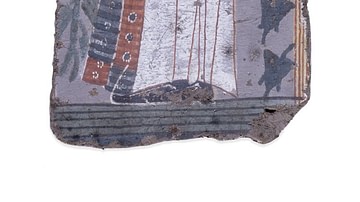
Image
Ahmose-Nefertari
Rectangular fragment of a polychrome tomb-painting representing Ahmose-Nefertari standing among foliage with cartouche above.
20th Dynasty, Tomb of Kynebu, Thebes, Egypt.
British Museum, London.
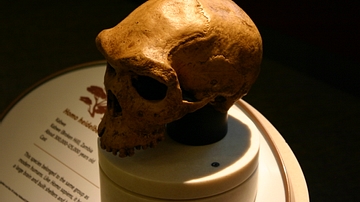
Image
Homo Heidelbergensis Skull
Replica of a Homo heidelbergensis skull on display at the David H. Koch Hall of Human Origins at the Smithsonian Natural History Museum in Washington, D.C.
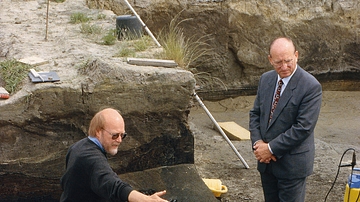
Image
Homo Heidelbergensis Spear
Dr. H. Thieme depicted with spear VI, a spear made by Homo heidelbergensis found at Schöningen, Germany. In total, eight wooden spears that had been carefully crafted were found at this site. They are at least 300,000 years old.
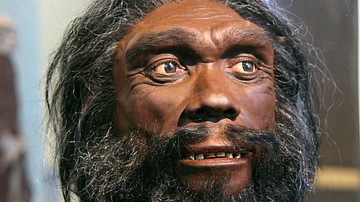
Image
Homo Heidelbergensis Reconstruction
Reconstruction of the head of an adult male Homo heidelbergensis. It is on display in the Hall of Human Origins in the Smithsonian Museum of Natural History in Washington, D.C.
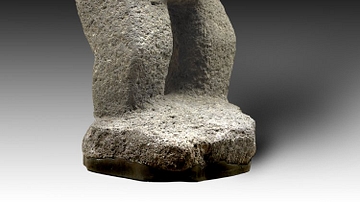
Image
Ehecatl with Duckbill Mask
A volcanic stone statue of the Mesoamerican wind god Ehecatl. He is wearing his typical duckbill mask. Aztec, 1300-1521 CE. (British Museum, London)
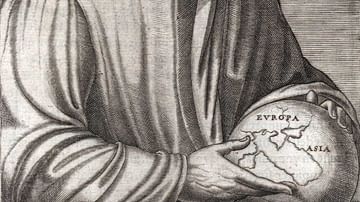
Image
Strabo
A 16th century CE engraving depicting Strabo, the Greek geographer and historian (c. 64 BCE - c. 24 CE). (Potraits from the Dibner Library of the History and Science of Technology)
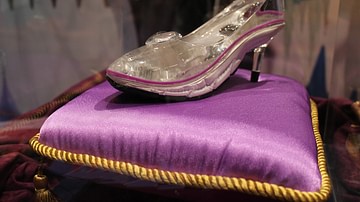
Image
Glass Slipper
A glass slipper. (Disneyland, California)

Image
Ehecatl, God of the Winds
A statue of Ehecatl, the Mesoamerican god of the Winds. The eyes are of obsidian and he wears his typical beaked mask. Aztec, Late Postclassic period. (National Museum of Anthropology, Mexico City)
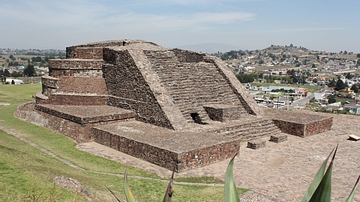
Image
Temple of Ehecatl, Calixtlahuaca
The Temple of Ehecatl at Calixtlahuaca, Toluca Valley, Mexico. Ehecatl was the Mesoamerican god of the Winds. Postclassic Period.